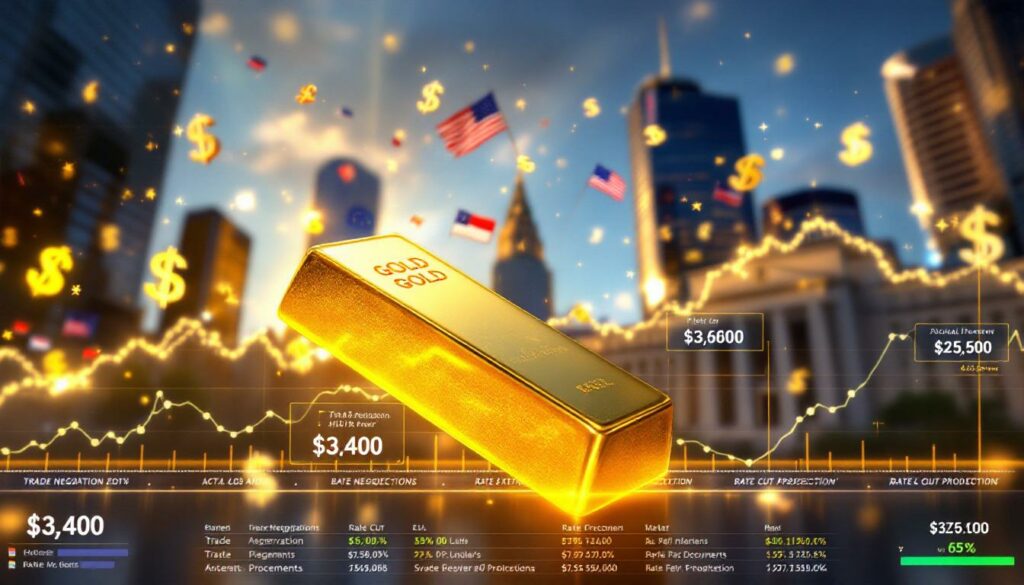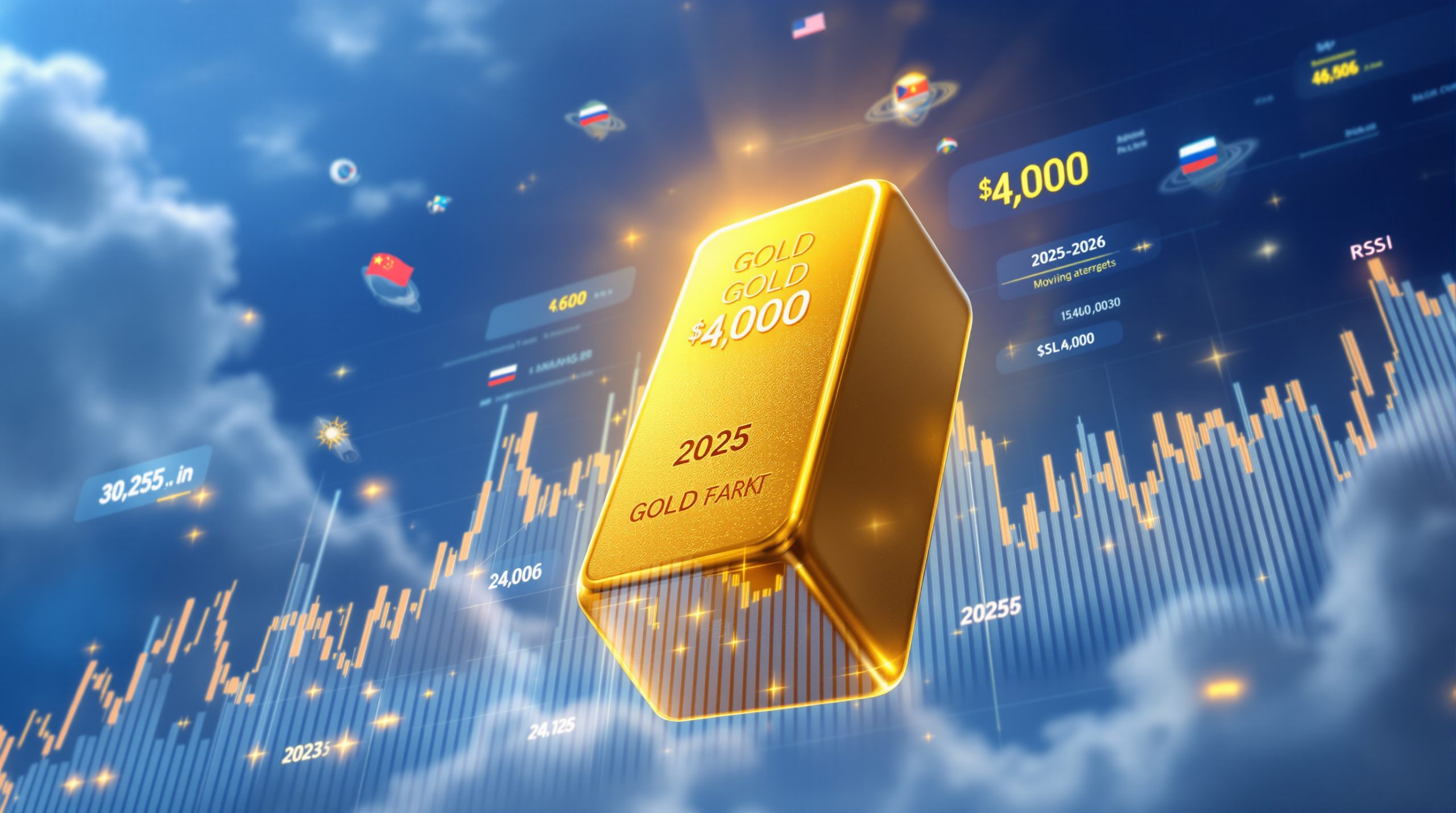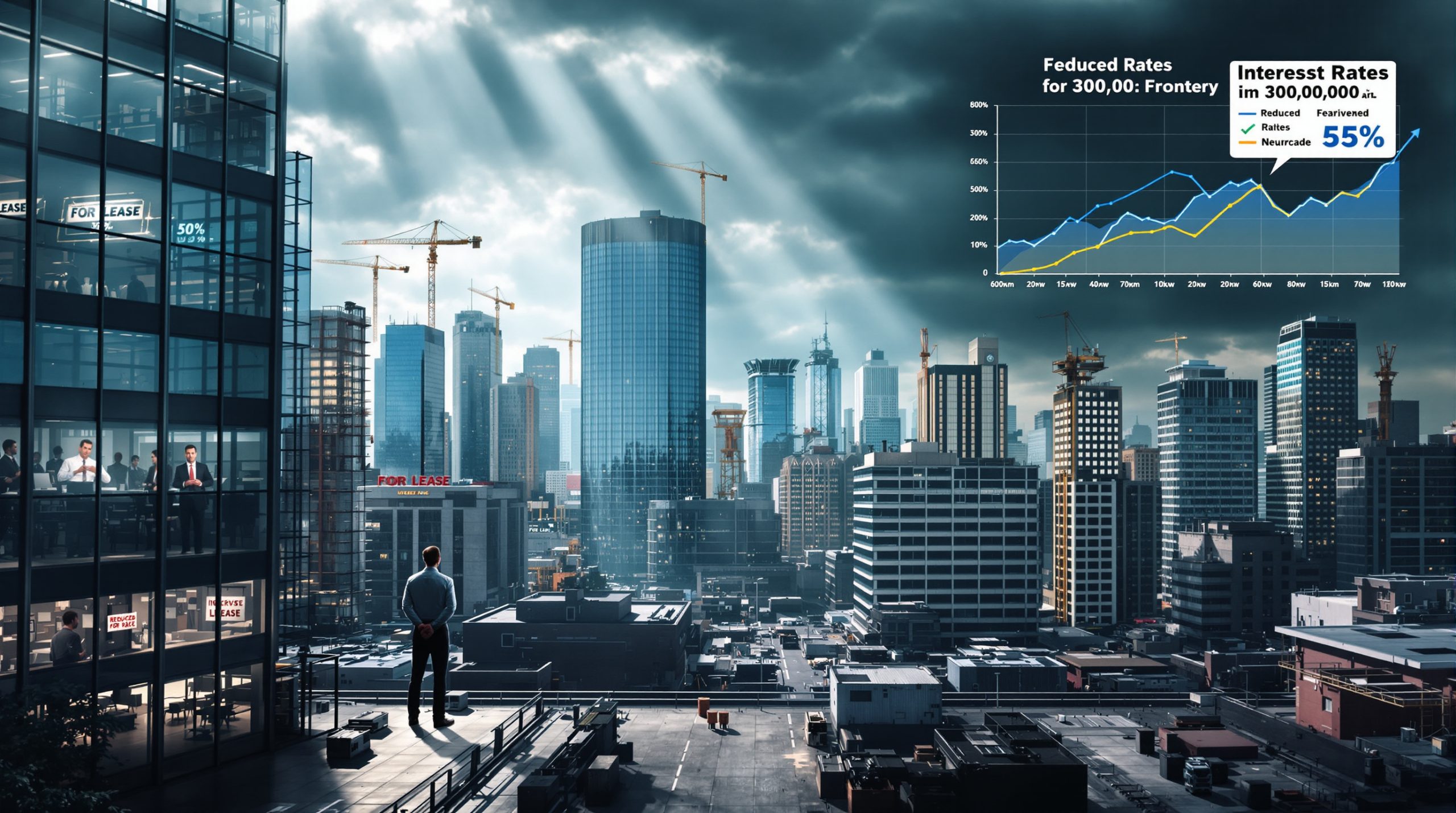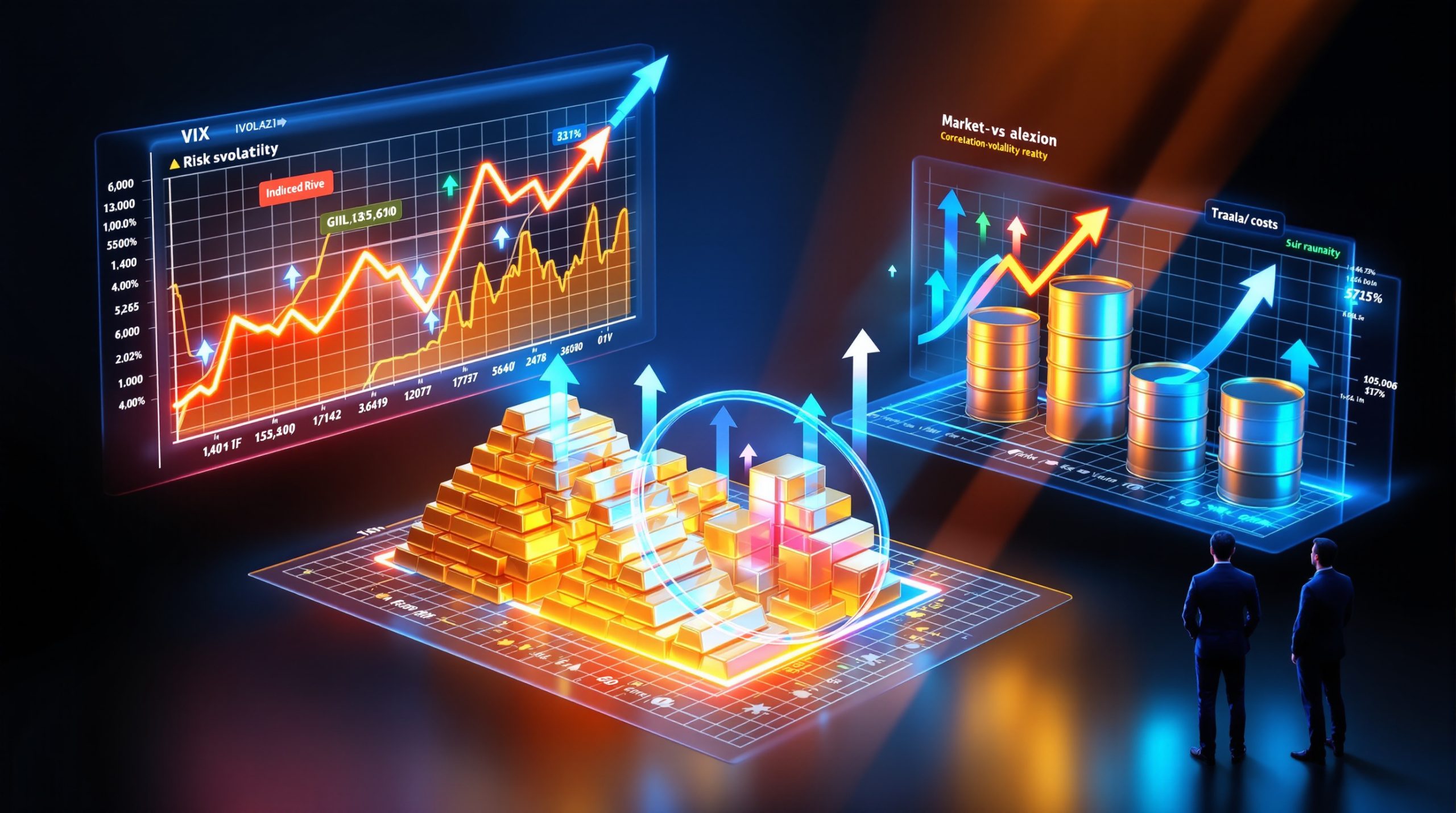What's Behind Gold's Dramatic Rise to $3,400?
Gold prices have soared to unprecedented heights, reaching the $3,400 per ounce milestone amid a perfect storm of market dynamics. This remarkable rally represents more than just a numerical milestone—it signals a fundamental shift in investor sentiment and macroeconomic conditions that warrant careful analysis.
The precious metal's ascent reflects a complex interplay of factors, from geopolitical tensions to monetary policy expectations, creating what analysts are calling "a textbook environment for gold appreciation."
Market Uncertainty Fuels Safe-Haven Demand
Global economic tensions have created a breeding ground for investor anxiety, pushing capital toward traditional safe-haven assets. The current impasse in US-EU trade negotiations has particularly unsettled markets, with the looming August 1st deadline creating a sense of urgency among investors worldwide.
"Uncertainty is the primary catalyst fueling demand for gold right now," notes Julian Phillips, precious metals analyst at GoldForecaster. "When investors can't predict next month's trade environment, they naturally gravitate toward assets with intrinsic value."
This flight to safety isn't unprecedented. Historical data shows gold typically outperforms during periods of economic and political uncertainty. During the 2008 financial crisis, gold appreciated over 25% while equity markets plummeted. Similarly, during the 2018-2019 US-China trade tensions, gold rallied approximately 18%.
Market Insight: Gold's current technical momentum shows similarities to the 2011 bull run, though today's rally features stronger physical demand fundamentals and more diverse investor participation across global markets.
The psychological component shouldn't be underestimated. Gold's tangibility provides comfort during unstable economic periods—a physical store of value when digital assets and currencies face unprecedented pressures.
Federal Reserve Policy Shift
Perhaps the most significant tailwind for gold comes from changing expectations regarding Federal Reserve monetary policy. Market pricing now indicates a 63% probability of a September rate cut, a dramatic shift from expectations earlier this year.
This matters tremendously for gold, which as a non-yielding asset typically performs best when interest rates are falling. Lower rates reduce the opportunity cost of holding gold, making it more attractive relative to interest-bearing securities.
Several Federal Reserve officials have recently delivered increasingly dovish signals, suggesting concern about economic momentum despite still-elevated inflation readings. This potential policy pivot creates a supportive environment for precious metals.
"The Fed's communication shift has been subtle but unmistakable," explains Dr. Meena Sharma, monetary policy researcher at Capital Economics. "Their emphasis has gradually moved from inflation fighting to growth preservation, which historically creates ideal conditions for gold price surge."
The relationship between interest rates and gold prices shows an inverse correlation of approximately -0.7 over the past decade, highlighting how crucial monetary policy expectations are to gold's performance.
How Are Global Economic Tensions Affecting Gold Prices?
Trade Negotiation Breakdowns
The stalled US-EU economic talks have introduced significant market volatility, with negotiations reaching a critical impasse ahead of the August 1st deadline. These developments aren't occurring in isolation but represent a broader pattern of global trade fragmentation affecting investor confidence.
The timeline of recent developments reveals an accelerating deterioration in trade relations:
- March 2025: Initial framework agreement announced
- May 2025: Disagreements emerge over agricultural subsidies
- June 2025: Technology transfer provisions become contentious
- July 2025: Negotiators miss three consecutive deadlines
Historical precedents demonstrate how trade tensions boost gold prices. During the 2018-2019 US-China trade war, gold appreciated 18% as tariffs escalated and negotiations repeatedly faltered. Today's situation shows striking parallels, though with potentially greater economic consequences given the combined economic might of the US and EU.
"Trade tensions create two drivers for gold," explains Dr. Wei Chen, international trade economist. "First, the direct economic impact reduces growth expectations and corporate earnings. Second, the psychological effect—uncertainty about future policy—drives risk aversion that benefits safe havens."
Investor Flight to Safety
Institutional and retail investors are demonstrating markedly different behaviors during this period of market stress. Large institutional players have increased gold allocations by approximately 3.2% across portfolios according to recent surveys, while retail investment has seen even more dramatic shifts.
Physical gold purchases have surged 42% year-over-year in key markets, with premiums on physical products reaching multi-year highs—particularly in Europe where proximity to geopolitical tensions has heightened concerns.
Portfolio hedging strategies utilizing gold have evolved significantly from previous market cycles:
- Traditional allocation: Typically 5-10% in balanced portfolios
- Current defensive positioning: Some funds increasing to 15-20%
- Tactical overlays: Options strategies using gold as underlying asset
- Currency hedge: Protection against potential dollar weakness
When compared with other traditional safe-haven assets, gold has outperformed during this current uncertainty phase:
| Asset Class | YTD Performance | 3-Month Performance |
|---|---|---|
| Gold | +21.4% | +8.7% |
| US Treasuries | +3.2% | +1.6% |
| Swiss Franc | +6.8% | +3.1% |
| Japanese Yen | +2.9% | +1.4% |
Expert Insight: "What makes this gold rally different is the breadth of participation. We're seeing unprecedented institutional allocation alongside retail buying, with particularly strong demand from regions experiencing currency instability." – Rhona O'Connell, Head of Market Analysis, INTL FCStone
What Do the Futures Markets Reveal About Gold's Momentum?
August Futures Performance
The premium in gold futures contracts provides one of the clearest signals of market expectations. August futures are trading at $3,411 per ounce—a 1.6% premium over spot prices, indicating strong forward demand and bullish sentiment.
This contango structure (where futures trade above spot) represents a shift from the flat curve seen earlier this year. Market technicians view this steepening futures curve as confirmation of the rally's sustainability rather than a temporary spike.
Trading volume analysis reveals increasing participation across both commercial and speculative traders:
- Daily futures volume: Up 37% compared to 30-day average
- Open interest: Increased 22% over previous month
- Institutional positioning: Net long positions at 3-year high
Technical indicators suggest continued strength, with key metrics showing:
- Relative Strength Index (RSI): 68 (strong but not yet overbought)
- Moving Average Convergence Divergence (MACD): Positive and expanding
- 50-day moving average: Recently crossed above 200-day
- Support levels: Establishing at $3,275 and $3,320
Market Sentiment Analysis
Institutional investors have adopted increasingly bullish positioning, with commitment of traders reports showing managed money net long positions at their highest levels since 2016. This represents a significant shift from the cautious stance seen just six months ago.
The options market activity provides additional insights into market expectations:
- Call option open interest exceeding puts by 1.7:1 ratio
- Implied volatility skew favoring upside scenarios
- Risk reversals (25-delta) showing preference for upside protection
The most recent Commitment of Traders (COT) report reveals commercial traders (typically hedgers) have reduced short positions while speculative money has increased longs—a combination historically associated with sustainable price trends rather than short-term spikes.
An interesting divergence has emerged between physical and paper markets. While COMEX futures show strong momentum, physical premiums in key Asian markets indicate even stronger immediate demand. Shanghai Gold Exchange premiums have reached $18 over London spot prices—the highest in five years.
Technical Analysis Perspective: "The momentum indicators suggest we're in the acceleration phase of this bull market, not the exhaustion phase. Typically, when we see futures curves steepen while physical premiums expand simultaneously, it indicates a multi-month move rather than a short-term spike." – Christopher Lewis, Senior Market Analyst
How Are Other Metals and Mining Sectors Performing?
Iron Ore Market Developments
Iron ore price trends have reached a five-month high of ¥89 per ton in Chinese markets, while Singapore futures have surged to $360 levels—the highest since February. This rally represents a remarkable turnaround for a commodity that was under pressure earlier this year.
The primary catalyst behind this strength is China's announcement of a mega-dam project in Tibet that will require extraordinary amounts of steel—estimated at four times the steel used in the Three Gorges Dam construction. This single infrastructure initiative has fundamentally altered the supply-demand dynamics for iron ore.
Historical comparison provides valuable context:
| Period | Price Range | Primary Driver | Duration |
|---|---|---|---|
| 2021 Peak | $220-235 | Post-pandemic recovery | 4 months |
| 2022 Slump | $80-110 | Property sector crisis | 8 months |
| 2023 Recovery | $110-140 | Infrastructure stimulus | 5 months |
| Current Rally | $250-360 | Mega-dam project | Ongoing |
The geological characteristics of iron ore deposits currently being mined also impact market dynamics. Higher-grade ore (62%+ Fe content) commands increasing premiums as steelmakers prioritize efficiency and environmental compliance, creating a two-tier market.
China's Infrastructure Stimulus
China's announcement of what will become the world's largest hydroelectric dam project in Tibet represents a strategic pivot in its infrastructure investment approach. The project's scale is unprecedented, requiring steel volumes that exceed the Three Gorges Dam requirements by approximately 400%.
Steel mill activity across China has already responded, with utilization rates climbing to 92%—the highest level in three years. This increased production is creating cascading demand for raw materials:
- Iron ore imports: Up 18% month-over-month
- Coking coal: Prices risen 32% since project announcement
- Ferroalloys: Chrome, manganese and nickel all seeing increased demand
- Metallurgical lime: Supply constraints emerging
"This single project has recalibrated the entire industrial metals complex," notes Zhang Wei, commodities strategist at Citic Futures. "The volume of materials required—not just steel but cement, copper wiring, aluminum structures—represents a demand shock that will reverberate through supply chains for years."
The impact extends beyond raw materials to equipment manufacturers, with orders for heavy machinery, excavation equipment, and specialized construction technology seeing significant increases.
Regional Impact: The project's location in Tibet presents unique logistical challenges, with materials needing to be transported across challenging terrain. This has created premium pricing for suppliers with established distribution networks in western China.
What Challenges Face Aluminum Producers?
Tariff Impacts on North American Operations
Alcoa, a major aluminum producer, has halted planned expansion projects at its Quebec facilities due to tariff pressures. The company reported $115 million in tariff-related charges in a single quarter—an extraordinary financial burden that threatens the viability of cross-border aluminum operations.
The situation impacts three Quebec smelters that have historically supplied the US market through integrated North American supply chains. These facilities represent some of the world's most environmentally efficient aluminum production, utilizing hydroelectric power for nearly carbon-neutral operations.
"The longer this goes on, the more damage to Quebec's competitiveness," Alcoa CEO Roy Harvey stated during the company's recent earnings call. The company has begun rerouting cargo to alternative markets, though this creates additional logistical costs and disrupts established customer relationships.
The Canadian government is considering intervention measures, potentially including:
- Subsidies to offset tariff impacts
- Retaliatory measures against US imports
- WTO dispute resolution mechanisms
- Direct negotiation for aluminum-specific exemptions
Industry-Wide Competitive Pressures
The aluminum sector faces broader competitive challenges beyond the immediate tariff situation. Quebec's aluminum industry, long considered a global benchmark for efficiency and sustainability, now faces existential questions about its long-term viability.
Production cost comparisons reveal the shifting competitive landscape:
| Region | Power Source | Production Cost ($/ton) | Carbon Intensity (CO₂/ton) |
|---|---|---|---|
| Quebec | Hydroelectric | $1,550-1,680 | 2.1 |
| Gulf Coast | Natural gas | $1,720-1,840 | 8.7 |
| China | Coal | $1,400-1,560 | 12.9 |
| Russia | Mixed | $1,320-1,490 | 7.6 |
This cost structure highlights why tariffs create such market distortions—they override the natural efficiency advantages of Quebec's production while potentially increasing global carbon emissions by shifting production to higher-emission regions.
Producers are exploring strategic pivots, including:
- Value-added processing within Canada to circumvent raw aluminum tariffs
- Expansion into European markets where green aluminum premiums exist
- Joint ventures with downstream manufacturers to secure demand
- Investments in recycling operations with lower capital intensity
"The aluminum industry demonstrates how trade policies can have unintended environmental consequences," explains Dr. Jennifer Morris, environmental economist at MIT. "By disrupting efficient, low-carbon supply chains, tariffs may inadvertently increase global emissions by shifting production to higher-carbon regions."
How Are Mining Companies Expanding Through Acquisitions?
Sibanye-Stillwater's Strategic Growth
Sibanye-Stillwater has executed an $82 million acquisition of Metallix Recycling, triggering a 5% jump in its share price and boosting its market capitalization to $6.8 billion. This strategic move represents a significant shift in how major mining companies approach resource acquisition.
The transaction is expected to complete by September's end, subject to regulatory approvals. It grants Sibanye access to Metallix's sophisticated metal recovery operations that annually produce over 21,000 ounces of gold and nearly 1 million ounces of silver from industrial waste streams.
Sibanye CEO Neal Froneman described the acquisition as "transformative for our urban mining strategy," highlighting how the company is diversifying beyond traditional mining operations. This acquisition follows a pattern of strategic diversification:
- 2016: Entry into platinum group metals (PGM) sector
- 2019: Battery metals investments (lithium)
- 2022: Copper project acquisitions
- 2025: Metallix recycling acquisition
The market response suggests investors approve of this strategic direction, with analysts highlighting several advantages:
- Lower capital intensity compared to greenfield mining
- Reduced environmental permitting complexity
- Shorter time-to-cash-flow
- Decreased geopolitical risk exposure
Precious Metals Recycling Opportunities
The Metallix acquisition highlights the growing importance of urban mining—recovering metals from industrial waste, electronic scrap, and other anthropogenic sources. This sector operates at the intersection of sustainability and economics.
Metallix's operations span multiple facilities across the UK and South Korea, utilizing proprietary hydrometallurgical and pyrometallurgical processes to extract precious metals from complex waste streams. Their recovery rates exceed industry averages by approximately 8-12%, representing a significant technological advantage.
The precious metals recycling sector offers compelling sustainability benefits:
- 80% lower energy consumption versus primary mining
- 90% reduction in carbon emissions per ounce produced
- Zero land disturbance compared to traditional mining
- Reduction in hazardous waste through proper processing
Industry trends show accelerating growth in metals recovery from industrial waste:
| Source Material | Recovery Growth (YoY) | Primary Metals | Market Size ($B) |
|---|---|---|---|
| Electronics | +23% | Au, Ag, Pd, Cu | $12.7 |
| Automotive catalysts | +17% | Pt, Pd, Rh | $8.3 |
| Industrial catalysts | +12% | Pt, Pd, Au | $4.9 |
| Jewelry scrap | +8% | Au, Ag | $7.2 |
"Urban mining represents the future of sustainable metals supply," explains Dr. Thomas Graedel, industrial ecology professor at Yale University. "The concentration of precious metals in electronic waste often exceeds that of primary ore deposits, creating both environmental and economic advantages."
What's Happening with Rare Earth Supply Chains?
China's Export Patterns
Recent data shows China's rare earth exports reached 3,188 tons in June—double May's volumes—indicating a significant shift in supply chain dynamics. Perhaps most notably, US-bound shipments increased dramatically from 46 to 353 tons month-over-month.
Despite this recent surge, current volumes remain below previous year's monthly averages, suggesting strategic control rather than unrestricted supply. This fluctuation follows China's implementation of export restrictions since April, which created significant market uncertainty.
The composition of these exports reveals strategic priorities:
- High-purity separated rare earths: Controlled tightly
- Mixed rare earth concentrates: Less restricted
- Magnet-related elements (Nd, Pr, Dy, Tb): Most stringently limited
- Non-critical rare earths: Minimal restrictions
These export patterns suggest China is calibrating its rare earth strategy rather than implementing blanket restrictions—targeting maximum leverage with minimal disruption to its own manufacturers.
Global Response to Supply Constraints
The volatility in rare earth supply has triggered emergency talks between China, the US, and the EU, with Pentagon officials specifically concerned about defense supply chains. These strategic materials are essential for advanced weapons systems, from precision-guided munitions to radar systems.
Western governments have accelerated investment in domestic supply alternatives:
- Pentagon's $245 million investment in domestic processing
- EU
Want to Catch the Next Major Mineral Discovery?
Discovery Alert's proprietary Discovery IQ model instantly identifies significant ASX mineral discoveries, transforming complex geological data into actionable investment insights. Explore why major mineral discoveries historically generate exceptional returns by visiting the Discovery Alert discoveries page and begin your 30-day free trial today.




